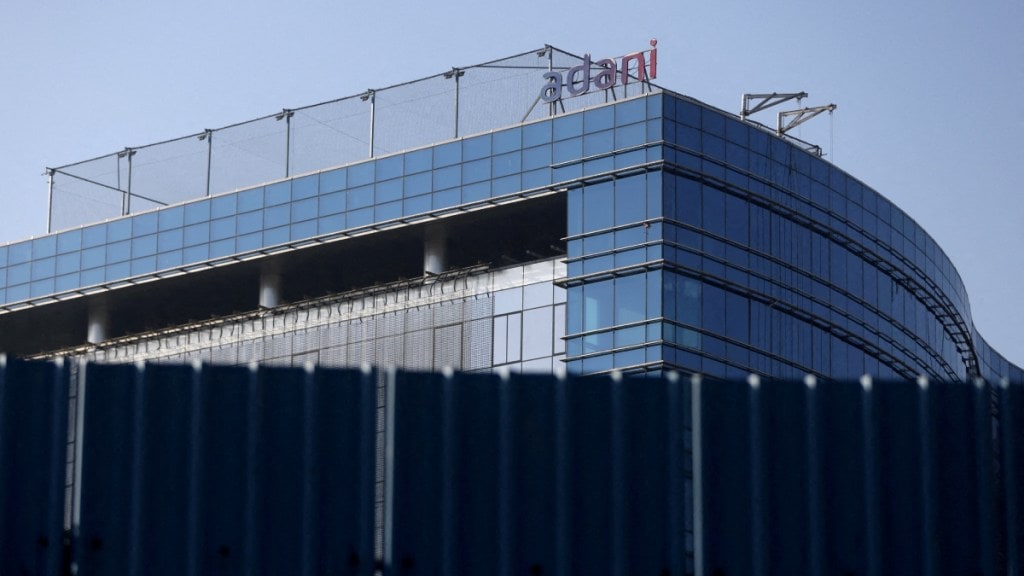The changing nature of the Indian economy that requires fewer workers on the factory floor appears to be weighing on large groups that have exposure to labour-intensive sectors such as energy and infrastructure. The Adani group, led by India’s richest man Gautam Adani, is one such example.
The Ahmedabad-based conglomerate, with a presence across sectors, from ports to cement, power to consumer goods, saw an addition of just 3% or 1,047 people to its FY24 headcount, according to data sourced from Bloomberg, Capitaline and company annual reports.
The number has been generated after taking into account 11 listed firms of the group including flagship Adani Enterprises, Adani Ports, Adani Green, Adani Power, Ambuja Cements, Adani Energy Solutions and Adani Wilmar among others. The airports business is not listed yet and is therefore not part of the analysis by FE Research.
Revenue of these 11 listed Adani group firms put together, which also includes cement company Sanghi Industries acquired in December 2023, declined 7.2% year-on-year in FY24. But net profit rose 53.7% and market capitalisation surged 74% versus FY23, data shows. So, what explains for the sluggish growth in headcount for the group?
While a mail sent to the Adani group elicited no response till the time of going to press, HR experts say that a combination of automation and hiring people off rolls or on contract basis is increasingly growing in India Inc. The Adani group, they say, is no exception here.
“Technology has become a big disruptor across sectors including industrial categories such as energy and infrastructure. Large groups also tend to outsource their labour requirements to external agencies in sectors such as ports, airports and roads. This could be contributing to muted figures in terms of additions to overall headcount, since it does not reflect in the payrolls of the group,” Ajay Shah, founder and president of upGrad Rekrut, which is into staffing and skilling solutions for companies, said.
Sources close to the Adani group say that the conglomerate has generated over 200,000 direct and indirect jobs in FY24, with the trend on the rise year-on-year.
“The employment models of the (Adani) group vary across sectors, industries and businesses, with an emphasis on automation and advanced technologies such as artificial intelligence (AI) and cloud computing. This focus not only supports operational resilience but also enables the development of new skills within the workforce,” an executive in the know said.
Industry sources say that the Adani group is hiring for its operations in green energy, power and cement, where it has big ambitions to grow scale. In June, for instance, the group announced that it would invest over $100 billion in energy transition projects as well as in manufacturing capabilities for clean energy generation over the next ten years. This is expected to fuel its hiring requirements in that business.
Adani Power, meanwhile, plans to double its thermal power capacity to 31 GW from 15 GW, using organic and inorganic methods, over the next few years. People will also be required here to drive these power plants. And in cement, the group, which is the second-largest cement maker in India, plans to take its total capacity to 140 million tonnes per annum by 2028 (MTPA) from 89 MTPA now.
Yet, there is another side to the story. The group is also automating operations at a rapid pace to drive efficiencies and improve speed in a few other business segments. In July, for instance, India welcomed its first cargo ship at the newly-built semi-automated container port in Vizhinjam, Kerala, which has been developed by the Adani group in partnership with the Kerala government. The MV San Fernando, which arrived from China, carrying nearly 2,000 containers on July 11, departed within days, offloading over 1,000 containers at the seaport, thanks to a machine-driven process. There was minimal manual intervention in a job that otherwise has workers milling in the dockyard to load and unload cargo.
While the group had indicated in July that the Vizhinjam port would create employment opportunities, with over 5,000 direct and indirect jobs available as part of it, experts say that much of the job creation would be during the construction phase of the project, which stretches till December 2028.
A recent study by Mckinsey Global Institute (MGI) found that in India, 44 million men and 12 million women were at risk of being displaced by automation by 2030. The MGI study notes that automation has gained pace in the post-Covid-19 era, which has implications for hiring as well, since large business groups see sense in reducing human intervention, as they strive to improve operational efficiency, meet consumer demand as well as navigate volatility and uncertainty within their respective industries.
For the Adani group, this translates into walking a tightrope between mechanisation and job creation. As things stand now, the former seems to be leading the race.

